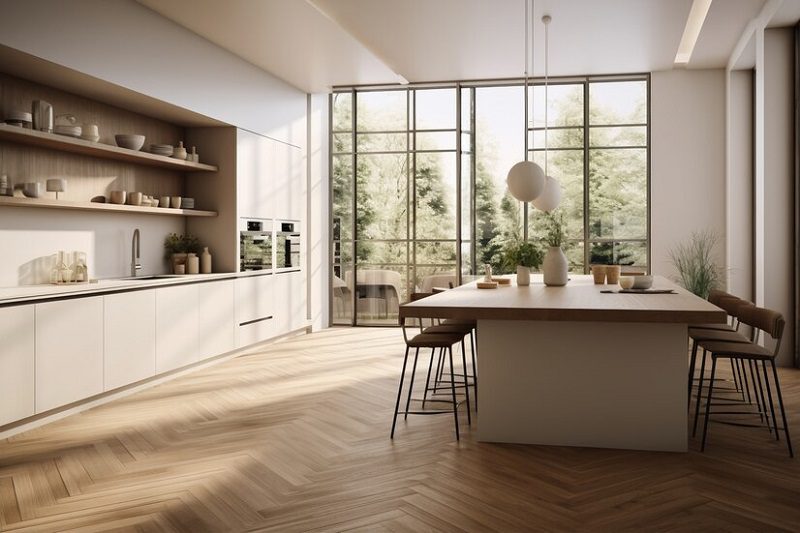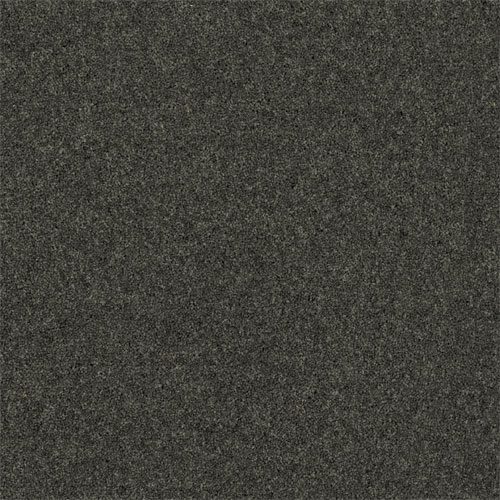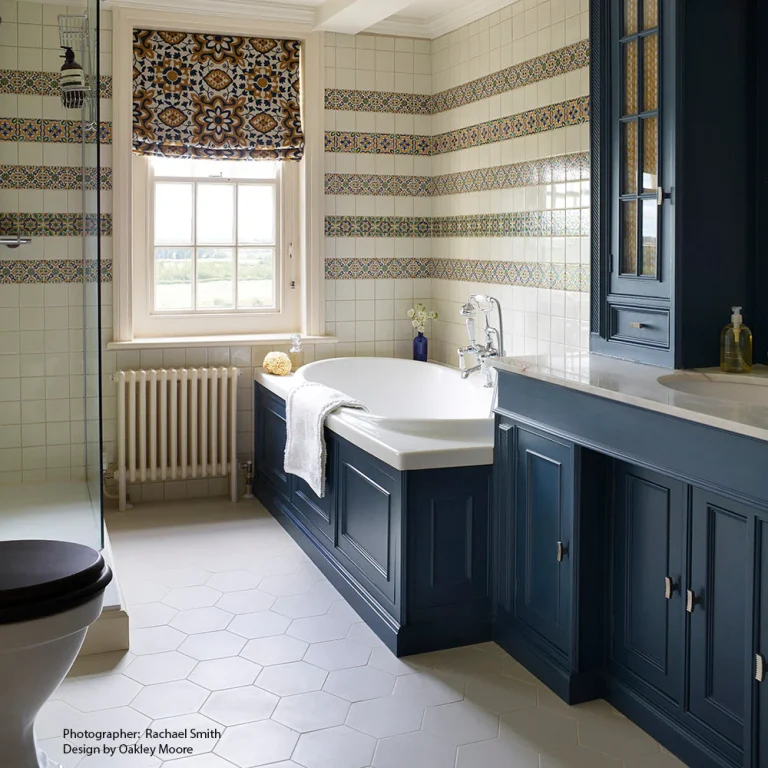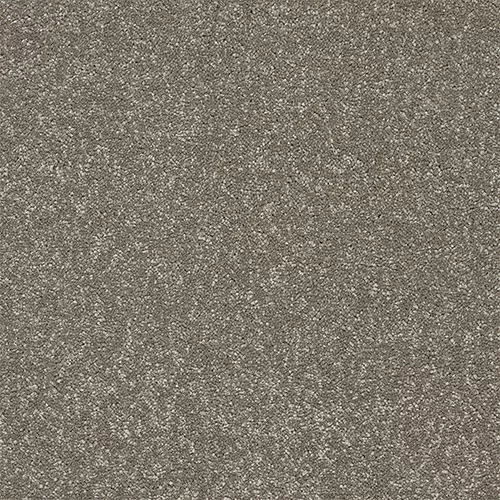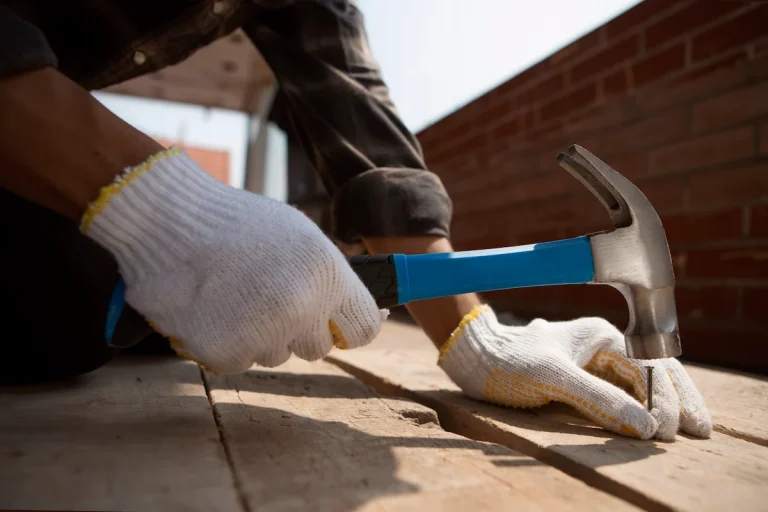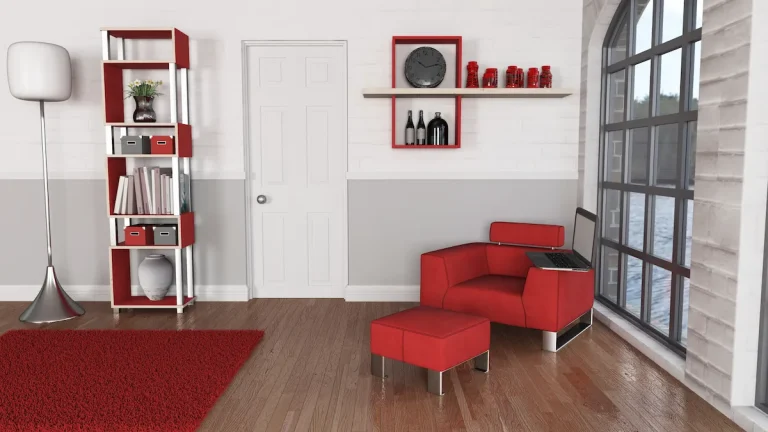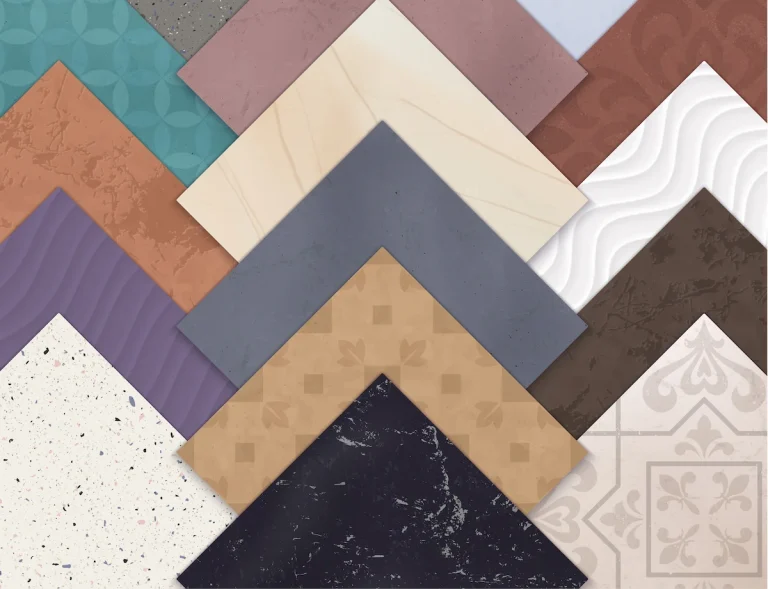Choosing the right kitchen flooring options is a crucial decision that can impact the overall look and functionality of your space. Consider factors like durability, water resistance, style, and budget when making this choice.
In this guide, we explore different types of kitchen flooring ideas, compare their pros and cons, and discuss important factors for installation and maintenance.
Whether you prefer tile, hardwood, laminate, vinyl, cork, or concrete flooring, this article will help you make an informed decision for your kitchen.
Kitchen Flooring Options
Kitchen flooring comes in various types to suit different preferences and requirements. Common kitchen flooring options include tiles, concrete, laminate, vinyl, and cork, each offering unique benefits in terms of durability, maintenance, and aesthetics.
1. Tile Flooring
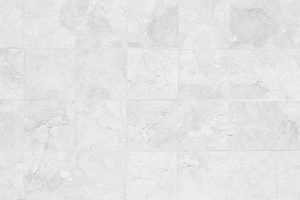
Tile flooring is one of popular kitchen flooring options due to its durability and versatility. Porcelain tile and ceramic tile options offer a wide range of colours, patterns, and designs to complement various kitchen styles while providing easy maintenance and long-lasting performance.
One of the standout benefits of porcelain and ceramic tiles in kitchens is their exceptional resilience. These tiles are highly resistant to scratches, stains, and moisture, making them perfect for high-traffic areas like the kitchen. Their durability ensures that they can withstand heavy footfall and frequent spills without losing their charm or structural integrity.
Regarding design options, homeowners are spoilt for choice with porcelain and ceramic tiles. From traditional to modern, sleek to intricate patterns, these tiles offer a myriad of possibilities to elevate the aesthetic appeal of any kitchen. Whether you prefer a classic look with simple white subway tiles or a bold statement with colourful mosaic patterns, there is a tile design to suit every taste and style.
Another advantage of choosing tile flooring for the kitchen is the ease of cleaning and maintenance. Porcelain and ceramic tiles are non-porous, making them resistant to water and liquid penetration. This characteristic not only simplifies cleaning spills and stains but also promotes a healthier environment by preventing mould and bacteria growth. Regular sweeping and occasional mopping are typically all that is needed to keep these tiles looking fresh and pristine for years to come.
On the other hand, the hardness of tile can be tough on your feet and legs if you spend a lot of time standing in the kitchen, prompting some homeowners to invest in anti-fatigue mats for added comfort.
2. Hardwood Flooring
Hardwood flooring adds warmth and natural beauty to kitchen spaces, creating a timeless and elegant look. With options like oak, maple, and cherry, hardwood floors offer durability, charm, and a classic appeal that enhances the overall aesthetic of the kitchen.
One of the key advantages of hardwood flooring in kitchens is its remarkable longevity. Unlike other flooring materials, hardwood can last for decades with proper maintenance, making it a cost-effective investment for homeowners. The rich tones and grains of hardwood add a touch of luxury to any kitchen, elevating the space into a sophisticated culinary haven.
Not only does hardwood flooring provide visual appeal, but it also increases the resale value of homes. Prospective buyers often prioritise hardwood floors, recognising their enduring quality and ability to withstand the test of time. This makes hardwood an attractive feature for homeowners looking to sell their property at a premium.
Hardwood flooring is renowned for its timeless appeal and natural beauty, but it can be susceptible to water damage and scratches. Regular maintenance, such as refinishing, is necessary to preserve its lustre and longevity.
3. Laminate Flooring
Laminate kitchen flooring provides a cost-effective alternative to hardwood with a wide range of styles and textures to mimic wood, stone, or tile. Its durability, easy installation, and affordability make laminate a popular choice for kitchen flooring.
One of the standout features of laminate flooring in kitchen settings is its versatility. Whether you want a sleek modern look or a cosy rustic feel, laminate can effortlessly adapt to various styles, enhancing the overall aesthetic of your kitchen. Moreover, resistance to scratches is another advantage that sets laminate apart. With busy kitchen activities and heavy foot traffic, laminate stands strong, maintaining its pristine appearance for years.
The low maintenance requirements of laminate flooring make it a practical choice for kitchens. Unlike traditional hardwood that demands regular refinishing and polishing, laminate simply needs periodic cleaning to keep its shine intact, saving you time and effort in upkeep.
It’s important to note that laminate flooring doesn’t perform well in humid environments like kitchens, where water spills or leaks could potentially cause swelling or damage. Over time, the wear layer on the laminate can show signs of scratches and fading, detracting from its initial appeal.
See product: Quick-Step Classic Havana Oak Natural With Saw Cuts
4. Vinyl Flooring
Vinyl kitchen flooring offers several advantages that make it an excellent choice for kitchen spaces.
Vinyl flooring is highly resistant to water, making it ideal for kitchens where spills and moisture are common. Its water-resistant properties help prevent damage from spills and leaks, making cleanup quick and easy. It is also known for its durability and ability to withstand heavy foot traffic, making it perfect for busy kitchen areas. It is resistant to scratches, dents, and stains, ensuring that it maintains its appearance even in high-traffic areas.
Vinyl flooring is incredibly easy to clean and maintain, requiring only regular sweeping and occasional mopping with a mild detergent solution. Unlike other flooring materials, vinyl does not require special sealants or treatments to keep it looking its best. Moreover, vinyl flooring offers a cushioned surface that is comfortable to stand on for long periods, making it a popular choice for kitchen floors where homeowners often spend a lot of time standing while cooking or cleaning.
Vinyl flooring comes in a wide range of styles, colours, and patterns, allowing homeowners to choose a design that complements their kitchen decor and personal style. Whether you prefer the look of hardwood, tile, or stone, there is a vinyl flooring option to suit your taste.
In addition, vinyl flooring is an affordable option compared to other flooring materials like hardwood or tile, making it an attractive choice for homeowners on a budget. Despite its lower cost, vinyl flooring offers excellent durability and performance, making it a cost-effective flooring solution for kitchens.
Despite its advantages, linoleum flooring may lack the upscale aesthetic of hardwood or the durability of tile. Over time, it can exhibit scratches and fading, particularly in areas exposed to direct sunlight, impacting its long-term appearance.
See product: Floorify Big Tiles Pebble Beach
5. Cork Flooring
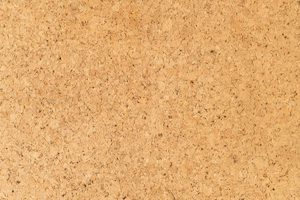
Cork flooring is a sustainable and eco-friendly choice for kitchen floors, providing a cushioned surface that is comfortable to stand on for long periods. Its natural insulation, antimicrobial properties, and unique texture make cork a distinctive and practical flooring option.
One key advantage of cork flooring is its ability to retain warmth, creating a cosy atmosphere in the kitchen. Its sound-absorbing qualities reduce noise levels, perfect for busy environments where echoes can be disruptive. Eco-conscious homeowners appreciate cork’s renewability, as the material is harvested from the bark of cork oak trees without harming the tree itself. Cork stands out as a versatile, sustainable, and visually appealing flooring choice for modern kitchens.
Despite these benefits, the vulnerability of cork flooring to wear and tear is worth considering. While it offers a unique aesthetic appeal and is relatively easy to maintain with regular sweeping and occasional sealing, it may not be the best option for high-traffic areas or homes with pets that could potentially scratch the surface.
6. Concrete Flooring

Concrete flooring offers a modern and industrial aesthetic for kitchen spaces, with customisable finishes and colours to match various design styles. Durable, easy to maintain, and versatile in design, concrete floors add a contemporary edge to kitchen interiors.
A notable benefit of concrete flooring in kitchens is its exceptional durability, making it resistant to scratches, heavy foot traffic, and kitchen spills. The ability to seamlessly integrate underfloor heating systems into concrete floors enhances comfort during colder months.
The design flexibility of concrete allows for the creation of unique patterns, textures, and even the incorporation of decorative elements like aggregates or stencilled designs. With its low maintenance requirements and long lifespan, concrete flooring proves to be a practical and stylish choice for modern kitchen spaces.
On the upside, concrete floors offer unparalleled durability and can withstand heavy traffic, making them ideal for high-activity areas like kitchens. Their sleek, minimalist appearance adds a modern touch to any space, complementing various design styles.
The hardness of concrete can be uncomfortable for long periods of standing or walking, which may not be suitable for everyone. The cold surface of concrete can be unwelcoming, especially in colder climates.
Factors to Consider When Choosing Kitchen Flooring Options
When selecting the perfect kitchen flooring options, it’s crucial to weigh several factors to ensure a functional and aesthetically pleasing choice. Consider durability, water resistance, ease of maintenance, style, aesthetics, and budget.
1. Durability
Durability is a key consideration when selecting kitchen flooring, as it needs to endure heavy foot traffic, spills, and potential impacts. Materials like tiles, concrete, laminate, vinyl, stone, and hardwood are recognised for their durability.
- Concrete stands out for its exceptional durability in kitchen settings, imparting a solid and long-lasting foundation in high-traffic areas. Its resistance to wear and tear makes it a popular choice for busy households.
- Stone flooring offers natural robustness, showcasing enduring strength and resilience against scratches and stains, ensuring a lasting investment in your kitchen space.
- Hardwood, known for both elegance and sturdiness, provides a classic touch to kitchens, with the ability to age beautifully over time while retaining its durability.
2. Water Resistance
Water resistance is crucial in kitchen flooring to prevent damage from spills and moisture. Options like porcelain tile, ceramic tile, linoleum, granite, limestone, and sandstone offer high water resistance, making them ideal choices for kitchens.
Porcelain and ceramic tiles are known for their impermeable surfaces, repelling water effectively and ensuring durability in kitchens.
Linoleum, a natural product, boasts water resistance and resilience against moisture, perfect for areas prone to spills.
Granite, limestone, and sandstone not only provide exceptional water resistance but also lend a touch of elegance to kitchen floors, elevating the overall aesthetic.
These materials’ ability to withstand water damage significantly contributes to the longevity of kitchen flooring, ensuring lasting quality and beauty over time.
3. Ease of Maintenance
Choosing kitchen flooring that is easy to maintain can simplify upkeep and cleaning routines. Materials like strand woven bamboo, engineered bamboo, solid bamboo, cork, and wood offer ease of maintenance and lasting beauty with minimal effort.
Regarding strand woven bamboo flooring, its inherent durability and water-resistant nature make it a great choice for kitchen areas where spills are common. Regular sweeping and occasional damp mopping are usually enough to keep it looking pristine.
Engineered bamboo flooring provides the elegance of hardwood with added resistance to moisture and stains, requiring simple sweeping or vacuuming followed by a light-damp mop. This makes it a practical and stylish option for busy kitchens.
Solid bamboo and cork are also resilient choices that only need regular sweeping and occasional cleaning with a designated wood floor cleaner to maintain their charm in a kitchen setting.
Wood flooring, while more traditional, offers timeless beauty in kitchens. With proper sealing and routine maintenance, like gentle cleaning with a wood floor cleaner and protection from prolonged water exposure, it can endure the demands of a kitchen environment for years to come.
4. Style and Aesthetics
The style and aesthetics of kitchen flooring can significantly impact the overall look and feel of the space. Materials like marble, slate, and wood offer diverse design options, from luxurious elegance to rustic charm, allowing homeowners to personalise their kitchens.
- For a sleek, modern look, homeowners often choose marble flooring, known for its timeless beauty and high-end appeal.
- Alternatively, slate brings a sense of earthy warmth with its rich, natural hues and unique textures, perfect for creating a cosy atmosphere in the kitchen.
- Wood flooring, on the other hand, offers a wide range of styles, from classic hardwood to trendy reclaimed wood, allowing for a versatile and customisable design.
Each material provides a distinct character and ambience, enhancing the visual appeal of the kitchen space.
5. Budget
Setting a budget is essential when selecting kitchen flooring to ensure that the chosen material aligns with financial constraints. Options like granite, limestone, sandstone, and cork provide a range of price points to suit various budgets without compromising quality or style.
Granite is often considered a luxurious yet durable choice that can elevate the aesthetic of a kitchen without breaking the bank. On the other hand, limestone exudes a natural, earthy charm and is more affordable compared to granite, making it an excellent compromise between cost and elegance.
Similarly, sandstone boasts unique patterns and textures that add character to a kitchen space. Plus, cork flooring stands out for its eco-friendly nature and budget-friendly price tag, offering a soft, comfortable feel underfoot.
Proper installation and maintenance are critical for ensuring the longevity and performance of your kitchen flooring. Hire a professional installer with experience in kitchen flooring installations like Fitting Service from TEKA to ensure the job is done correctly. Additionally, follow the manufacturer’s guidelines for routine maintenance to keep your floors looking their best for years to come.
Seeking to identify the ideal flooring for your household kitchen, from hardwood flooring to vinyl flooring? Choose the best product, get a free consultation, and more of our services for kitchen flooring options with TEKA Flooring!
Read also:


























